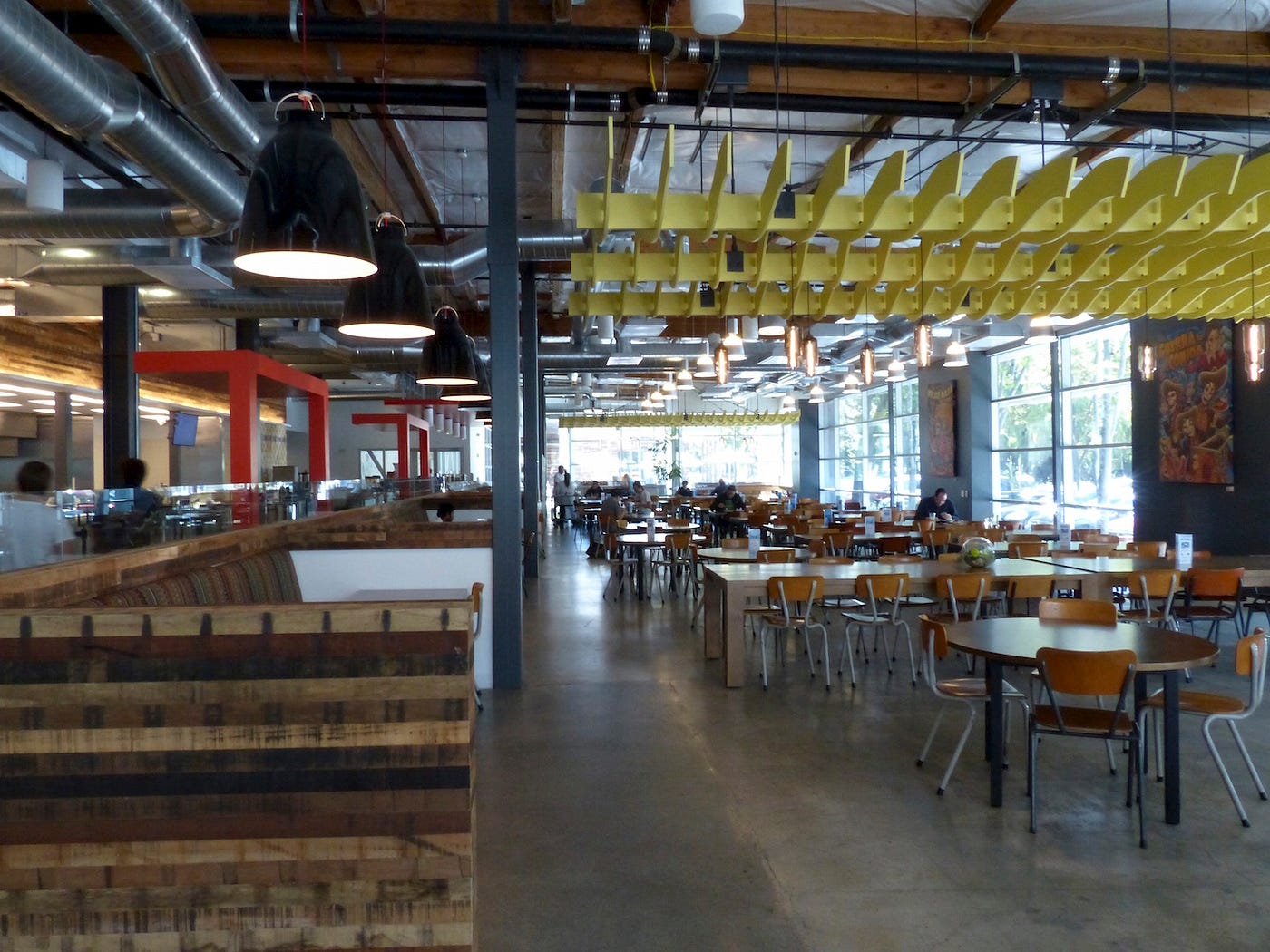
Five years ago, the office lunch scene was very different. Employees navigated through processed, unexciting food from a fast-casual joint or else were members of the brown-bag crew, hastily packing sandwiches or leftover Thai food to reheat in the break-room microwave.
Fast-forward to today, and the office lunch scene looks very different. Large cafeterias with global menus, healthy snacks and kombucha on tap are the norm rather than the exception. Companies proudly tout their culinary offerings, while friends make excuses to drop in to other offices to see for themselves what the fuss is about. Our obsession with food has permeated our work life, and it’s not going away anytime soon.
The rise of the free office lunch can be attributed to three main factors: extended benefits for chefs, increased employee productivity and competition in attracting talent.
Working in a restaurant means long hours, unpredictable schedules and high levels of exhaustion. While larger establishments are slowly beginning to offer benefits to cooks, the majority of cooks still receive little in terms of vacation time or retirement funds. If they want to start a family, there is the added pressure of trying to balance work life and home life.
Many tech companies, however, have created “food programs with high-quality products and high-end dining experiences” so cooks can now exercise the same creativity they had in the restaurant but with better pay and hours. They get to utilize their restaurant or culinary-school training but in a setting that gives them the stability to pursue social and familial opportunities they couldn’t pursue before.
At its core, food is nourishment, so when a company takes care of this basic need, employees are healthier and better prepared to focus on their tasks for the day, which leads to increased productivity in the workplace.
On its own, productivity is a tricky thing to measure. Companies are constantly tweaking things to boost output — an open floor plan being an obvious example. Food plays into this metric as well. A study showed that “software developers who ate lunch in large groups wrote 10 percent more code than those who ate solo.” And the best way to encourage group lunches? Create a space for it to happen naturally every day through on-site cafeterias and chefs.
Moreover, companies want talented, committed employees, so they compete with each other to showcase why they are the place to work at. Offering free lunches is one way to prevent turnover; a recent survey stated that while56 percent of employees consider themselves happy with their current job, the number jumps to 67 percent when they have access to free food.Furthermore, nearly half of the respondents said that they weigh the availability of food at an office in their decision when looking for a new job. Free lunch matters, whether a company likes it or not.
The free lunch has become part of a larger schema to transform the workplace into an extension of one’s daily life. In addition to creating the “whole package” for cooks and employees alike, the food a company offers represents their culture, so there is a real effort to make it original, surprising and diverse. It becomes a personal investment in their employees’ well-being that translates to the well-being of the company.
Five Bay Area Companies with Great Lunches
1. Google SF
The cafeteria is huge, so while lines are long, they move quickly. They’ve got a bread-and-cheese station, where employees can grab baguette chunks and loads of cheese to make their cheese plates and feel fancy. Then they can sit outside and enjoy a view of the Bay Bridge as they eat.
2. Uber
The company has three San Francisco offices, each with its own set of dining options. There are rotating menus, with fresh flavored waters to finish off one’s meal. And they’ve got snacks galore. Peanut-butter filled pretzel bites, anyone?
3. Airbnb
Chef Sam is a legend for his pun-filled menus (think the Fresh Prince of Airbnb). After grabbing a meal, employees can pour some kombucha on tap and feel fresh and healthy.
4. Dropbox
While its food didn’t actually get a Michelin star, it’s still very good. Dubbed the Tuck Shop, everything here is nicely plated and makes for a solid meal. After you’re done eating, the baristas can make you any espresso drink so you can avoid a food coma as you head back to work.
5. Facebook
There are tons of cafes to choose from, but my ideal one is in the campus’s newest building, MPK 20. After grabbing their fare, employees can head up to the rooftop garden to sit outside and enjoy their meals. After lunch, people often stop by the Sweet Shop to build their own ice cream desserts.







